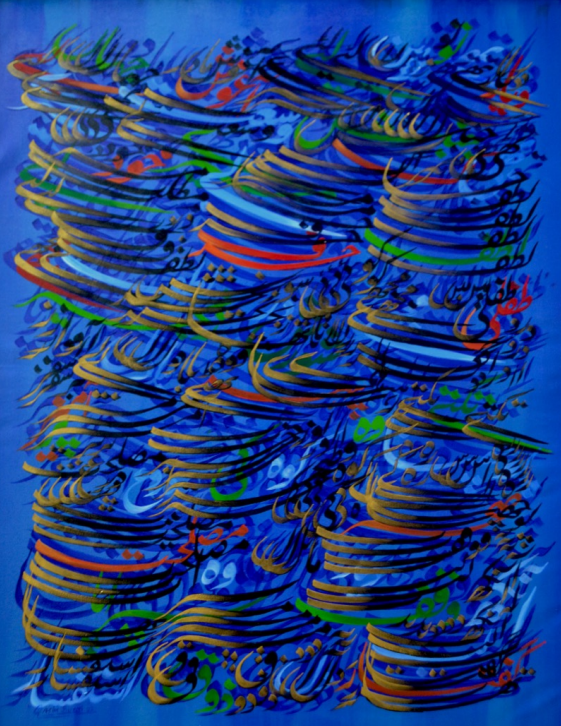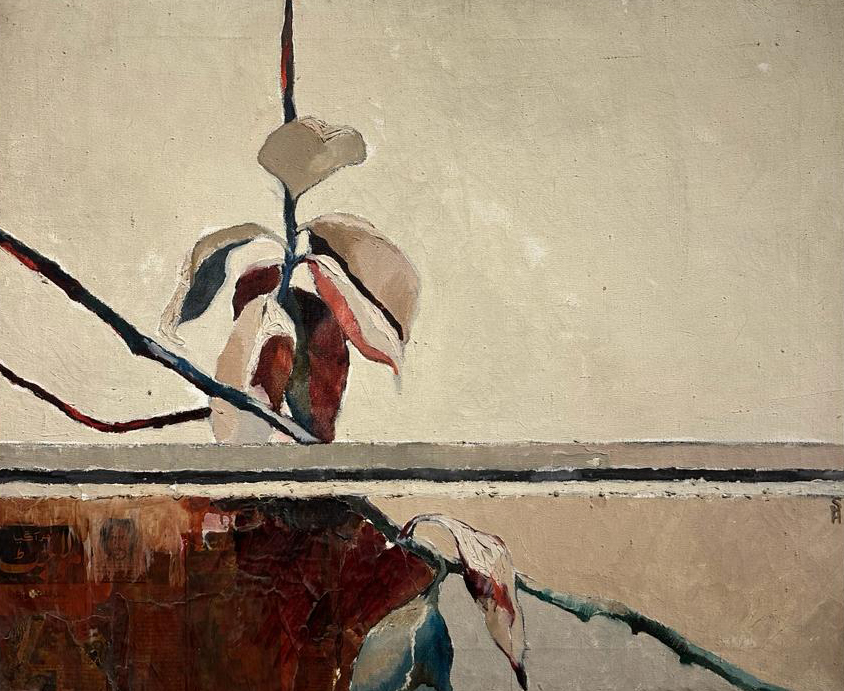The recent show at Art Chowk showcased contemporary art works of Manizhe Ali and Paul Mehdi Rizvi Throughout history, artists have been in sea
The recent show at Art Chowk showcased contemporary art works of Manizhe Ali and Paul Mehdi Rizvi
Throughout history, artists have been in search of the new and novel, seeking a unique voice that subverts established canons of their times and heralds a new era of creativity. Often, new art movements emerge as a response to the current political and social situations or out of disdain and frustration with institutions. This quest for innovation in art is not a new concept, but it takes on a unique form in our digital age, where the free flow of information seems to have exhausted all ideas and revealed the sheer unoriginality of seemingly original creations on the digital horizon. Consequently, it has become necessary to not just push the boundaries of art but to obliterate them altogether. Now, art encompasses infinite possibilities of mediums, materials, processes, and visual expressions.
A recent show at Art Chowk Gallery, titled “Artists of the Manifesto of Nomadism,” presents one such attempt through the “Manifesto of Nomadism” that advocates for dismissing and permeating the boundaries of art-making, allowing free movement of ideas between disciplines. The statement reads, “Manifesto of Nomadism (2010-2023) seeks the renewal of boundaries in art and is, if not an outright rejection of highly prescriptive models, then at least an attempt to encourage a thorough and rigorous hermeneutics to arrive at a viable reconfiguration of a few principles.”
This re-arrangement of boundaries to make them fluid and expand the definition of art creates space for other disciplines, giving birth to hybrid and ‘polymorphic’ practices. The artists included in this Manifesto are Paul-Mehdi Rizvi and Manizhe Ali. Both artists come from diverse educational and vocational backgrounds, enabling them to engage in multidisciplinary practices where various threads of life coalesce and enrich their work.
Rizvi’s career spans roles as a Creative Head in advertising agencies, a Producer-Director for film and TV, and a fashion photographer. His Manifesto of Nomadism draws from his longstanding interest in Semiotics and Structuralism, as well as recent intensive studies in art history and criticism. The series of works showcased in this show present a mixed-media collage-like engagement with diverse materials, with each piece meticulously described (instead of being generically termed “mixed media”). Found objects, materials, textures, and thick impasto paint combine to create complex yet abstract visuals that conceal many layers for the viewer to explore.
The “Object” series appears to comment on the institutionalization of art, breaking it down into a set of skills and tools acquired in a controlled environment. However, the use of packaging materials, plastics, and tin foil brings in a commercial element, suggesting an underlying commentary on consumerist culture.
“The Oceanographers’ Sacred Book” series delves into similar themes, presenting minimalist black surfaces with cloth, plastic, and foam inclusions to create abstract shapes resembling mutated and stylized sea creatures next to pieces of ocean debris. It serves as an illustration of the devastating effects of man’s industrial activities on the aquatic environment and its creatures.
Another series of works reinterprets iconic artists such as Piet Mondrian, Kazimir Malevich, and Mark Rothko in a contemporary capacity, reflecting modern ideals and cultural alternatives. In doing so, the artist not only subverts established art canons but also positions their work as the next radical step in art-making, akin to what these iconic artists did in their time. For instance, Mondrian is re-imagined with Urdu letters cut out of Styrofoam, packaging materials, plastic, resin, and lint, while Rothko’s color blocks are executed with cardboard, paper, metal, and plastic. Titles like “As Though Rothko” suggest imitation but purposefully overthrow and rethink essence and themes in relevance to modern times.
In relation to the Manifesto and Rizvi’s work, Manizhe’s graphite drawings stand in stark contrast. A more traditional form of expression, her soft and sensitive drawings of various animals carry heavy allegorical narratives. “The Crows,” a diptych with an ominous disposition, positions the crow among geometric patterns, hiding as a silhouette in one piece and focusing on its eye in another, evoking mystery and superstition surrounding these intelligent creatures.
Some of Manizhe’s works also feature scarabs and horses in silhouette. “The Guardians” shows two stag beetles pointing their mandibles at a small defenseless baby in a fetal position. The creatures seem menacing and hostile towards their vulnerable prey, with their mandibles turned towards the baby rather than any impending danger. However, the title suggests otherwise, as the stag beetle symbolizes the triumph of good over evil and stands as a reminder of strength, endurance, perseverance, and rebirth in European religious culture.
“And They Came to Dinner” is another work rich in metaphor, with a portrait of a woman at the center of what appears to be a plate, surrounded by vultures. Her mouth is covered by the silhouette of another figure in red, while splashes of red surround the plate. This piece explores the idea of food in relation to violence, evoking the experiences of women during and after marriage proposals, where dinner becomes symbolic, and the host herself is being served up for judgment.
In Manizhe’s work, her engagement with film-making and jewelry design shines through in the way she composes her images and tells stories through metaphor. Characters are arranged like design elements, and her use of motifs, geometry, and repetition demonstrates a preference for premeditated structure and organization over invoking visceral emotions











COMMENTS